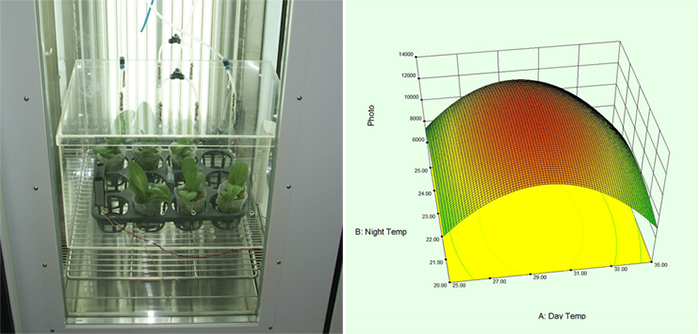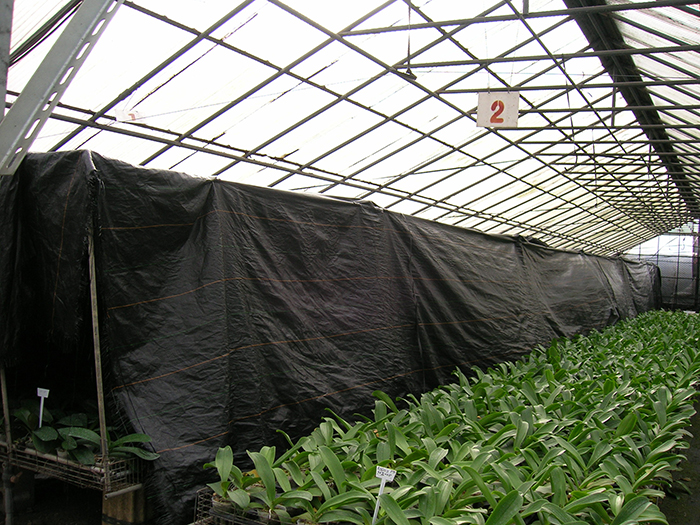![]() Service Platform for the Detection of Physiological Characteristics of Phalaenopsis Seedlings
Service Platform for the Detection of Physiological Characteristics of Phalaenopsis Seedlings
A technique was developed at TARI to establish optimal environment conditions for the propagation of Phalaenopsis seedlings. This technique involves monitoring carbon dioxide exchange rates in Phalaenopsis seedlings in a multiple-chamber facility and using the data to determine the physiological characteristics of each variety of Phalaenopsis seedling. The technique allows researchers to determine the optimal conditions for seedling growth for each Phalaenopsis variety, thus, providing Phalaenopsis growers with improved technical services and greater customer satisfaction.

The facility for testing physiological characteristics of Phalaenopsis seedlings (left) and
the data collected from the test showing differences in growth response of Phalaenopsis varieties (right).
![]() A Technique for the Inhibition of Spike Formation in Phalaenopsis during Winter
A Technique for the Inhibition of Spike Formation in Phalaenopsis during Winter
To prevent over supply of Phalaenopsis, heating is normally used to inhibit spiking of Phalaenopsis plants in the winter. However, studies at TARI have shown that heavy shading is a low-cost alternative with a similar ability to inhibit spike formation in Phalaenopsis plants and, thus, can be used to replace the traditional heating methods to reduce costs in commercial Phalaenopsis orchid production operations.

A greenhouse with shading treatment for the prevention of spike formation of Phalaenopsis plants in winter.

